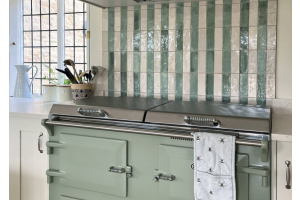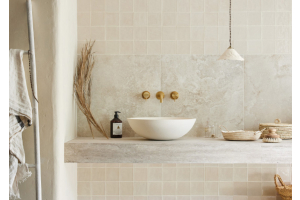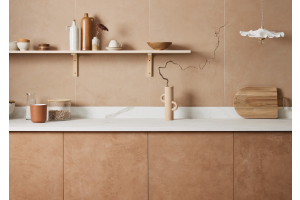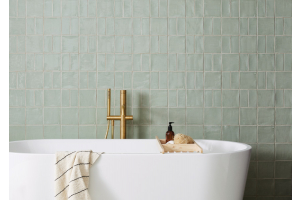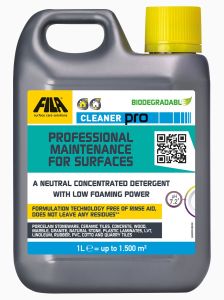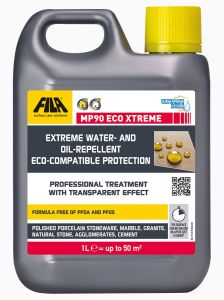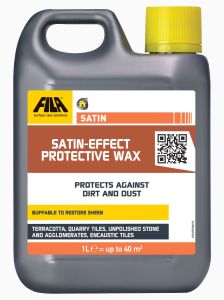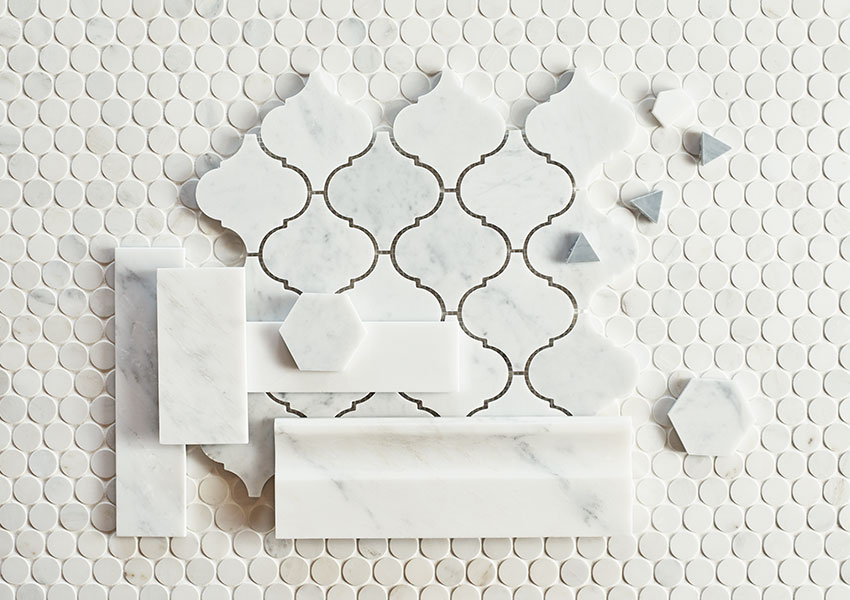
Installing Marble Tiles and Mosaics
Marble has been used for many thousands of years across walls and floors, in homes and public buildings all around the world. Its natural crystalline properties create a uniquely beautiful look and if installed and maintained well, will stay looking fantastic for many years.
CHECKS PRE-INSTALLATION
The first thing to consider when installing marble is to ensure that the substrate is strong, solid and stable. In most cases marble floor and wall tiles are 10mm thick, so any movement in the substrate will transfer through to the tiles. If the substrate is not correctly prepared before the tiles are installed, then your tiles could eventually crack and fail.
If installing tiles onto timber construction floors such as joists and floorboards, then there should be no bounce in the floor. A quick and easy test for this is to put a tall glass filled 2/3 with water and jump around on the floor. If the water ‘shocks’ in the glass (as per T-Rex joining the party in Jurassic Park!) then the floor can be tiled using a de-coupling membrane. De-coupling membranes (such as Ditra matting) stop any slight movement or natural expansion and contraction of the wood transferring through to the tiles, and can be easily installed by your tiler.
If the water swings side to side in the glass, then the floor probably needs to be braced, possibly with more joists and some thicker floor boarding such as 18mm marine grade plywood to stop the slight trampolining effect. This can be done by your builder, or in some cases your tiler, but it will need to be discussed when they come to quote before they start work, so that there is no delay to your project.
By the way, if the glass falls over, then very carefully and slowly retrace your steps back out of the room and call a good builder, as the floor may need to be replaced!
When it comes to walls, the best substrate is something like hardie-backer board, or dukka board. These are cement-based boards that can be fixed directly to studwork or brick/block walls. These provide an excellent and secure grip for the tiles to bond to. The worst surface to tile on to is freshly plastered walls or standard plasterboard. The tiles may initially bond to the nice clean surface, but they could pull the thin plaster skim or the paper front of your plasterboard completely off the wall, and everything will end up on the floor.
'Always use a waterproofing system behind tiles in a shower.'
Just a quick note on tiling showers here. Tiles might be good at stopping water, but they should not be relied upon to be the waterproofing. Always use a waterproofing system behind tiles in a shower. Even the smallest crack or hole in the grout could suck water behind the tiles and start to damage the walls of your house. For advice on the system we offer, please contact our Sales team.
INSTALLING YOUR TILES
Now you have a good base to work with, your tiler can start to install the tiles. We always recommend using the powder-based adhesive we sell (not pre-mixed adhesive) in a similar tone to the tile and the grout; i.e. white grout for white or pale marble/grout, grey adhesive for black or dark marble/grout. This is especially important with white/light marble, as they can be slightly translucent (just hold up a piece against a light to see how much). Whilst dark grouts with white tiles is a great look, if you put grey adhesive and grout behind and around your white or translucent marble tiles, you will kill any light refraction. You may well end up with dull, grey and lacklustre looking tiles. If you want the look of darker grouts with white or pale tiles, we recommend using a glazed ceramic tile… after all, Claybrook has plenty of lovely ones to choose from!
SEALING, FINISHING AND MAINTENANCE
To ensure your marble tiles stay looking their best, we recommend they are sealed, finished and cleaned with our recommended products. Sealing helps prevent liquids soaking into the body of the tile, and finishers will help you keep the surface clean and support the sealer in defending your marble from stains. Cleaning them with our ph neutral cleaners will then make sure those defences are kept in tiptop condition. However, as good as modern sealers, finishers and cleaners are, if strong coloured or acidic products (wine, oil, vinegar, coffee, tea, fruit juice, cleansers, hair dyes etc) are left on the marble to keep attacking it, then those products will eventually beat that defence and start to stain your marble. The same applies to products like Flash, eco products with citric acid or any cleaners that are not ph neutral. So, correctly sealing, finishing and cleaning your tiles will give them the best chance.
'To ensure your marble tiles stay looking their best, we recommend they are sealed, finished and cleaned with our recommended products'
If you have the space, time and inclination you can always lay the tiles out and seal them yourself before the tiler starts. However, modern-day sealers are fast curing, so they can be applied by the tiler after he has put the tiles up/down, but in all cases must be applied BEFORE the tiles are grouted. If you have any questions on the correct sealer or finisher for your tiles, just speak to our Sales or Technical teams.
CHOOSING THE RIGHT TILER FOR THE JOB
One last word of advice on choosing your tiler - always ask if they have laid marble tiles/mosaics before and if they have the correct equipment to cut the marble successfully. At Claybrook we only recommend the use of a water-cooled tile cutter and it must have a clean, sharp blade. Using hand-held angle grinders with air-cooled blades is possible, but really only by very skilled tilers. At Claybrook we find nothing more heart-breaking than customers buying our beautiful products, only to have them installed badly and going through the trauma and expensive of ripping them out and starting again. Take a look at Huds Tiling Services or Terry The Tiler on Instagram to see how professional tilers can make the best of your tiles. Good tilers may be more expensive than “the bloke around the corner that does a bit of tiling”, but the old adage is true - buy cheap, buy twice.
For advice on the best style to lay your tiles, or the best way to plan, cut or install your chosen tiles, contact our helpful Sales team or experienced Technical team at [email protected] or [email protected]

